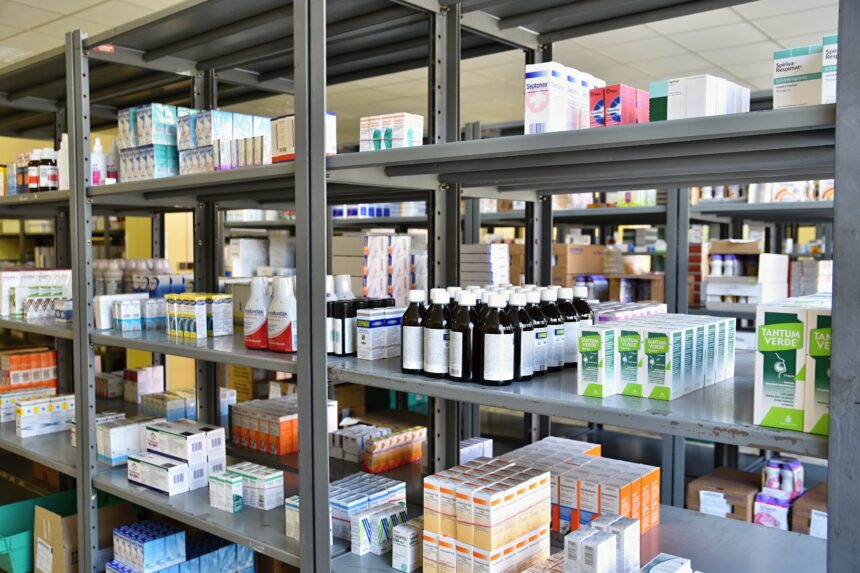The pharmaceutical manufacturing industry is undergoing a dramatic transformation, driven by advances in technology, increasing global demand for drugs, and the evolving needs of healthcare systems. As we look towards 2025, it’s clear that the sector is poised to face both challenges and opportunities, which will reshape how drugs are developed, manufactured, and delivered. This report delves into the key trends, innovations, and market dynamics that will define the pharmaceutical manufacturing landscape in 2025.
1. Technological Innovation: Automation and AI
The pharmaceutical manufacturing sector has long been reliant on traditional production methods, but in 2025, automation and artificial intelligence (AI) are expected to dominate. These technologies are enabling greater efficiency, precision, and scalability in drug production.
Automation is already streamlining production lines, reducing human error, and improving consistency. In 2025, the integration of smart robotics and automated assembly lines will be commonplace, significantly reducing operational costs and increasing throughput.
Meanwhile, artificial intelligence is being leveraged to optimize processes like drug formulation, production scheduling, and supply chain management. AI algorithms can predict production bottlenecks, optimize raw material usage, and ensure quality control, leading to enhanced operational efficiency.

Moreover, machine learning will allow pharmaceutical companies to predict market demand more accurately, adjusting production strategies in real-time to meet shifts in demand.
2. Personalized Medicine and Biopharmaceuticals
A significant trend that will dominate pharmaceutical manufacturing by 2025 is the rise of personalized medicine. Advances in genomics and biotechnology have made it possible to develop drugs tailored to individual patients’ genetic profiles. These therapies offer more effective treatments with fewer side effects, as they target the underlying causes of diseases rather than just symptoms.
Manufacturers will need to adapt to the complexities of producing small, highly specific batches of drugs, which will require highly flexible and scalable manufacturing systems. This shift towards biopharmaceuticals, including gene therapies, monoclonal antibodies, and cell-based therapies, will also drive changes in the production process. Biopharmaceuticals are often more difficult and costly to manufacture compared to traditional chemical drugs, which means that innovations in bioprocessing technologies, such as single-use bioreactors and cell culture systems, will be critical to achieving cost-effective production.
By 2025, pharmaceutical manufacturers will be investing heavily in biomanufacturing facilities to accommodate the specialized needs of these complex drugs, ensuring high levels of quality and efficiency.
3. Sustainability and Green Manufacturing
As environmental concerns continue to rise, there is increasing pressure on pharmaceutical companies to adopt sustainable manufacturing practices. In 2025, the industry will see a greater emphasis on reducing the environmental impact of drug production, with a focus on green chemistry and the circular economy.
Pharmaceutical manufacturers will invest in technologies that reduce waste, lower energy consumption, and use renewable materials. For example, companies are likely to adopt green solvents and reduce the use of harmful chemicals in their production processes. Additionally, advances in wastewater treatment technologies and the recycling of production by-products will become more common.

Sustainable manufacturing practices will also be crucial in addressing the growing concerns around pharmaceutical waste, including discarded drugs and packaging. Companies will seek innovative solutions for drug disposal and recycling to minimize their environmental footprint.
4. Supply Chain Resilience and Transparency
The global pharmaceutical supply chain has faced significant disruptions in recent years, most notably during the COVID-19 pandemic. In 2025, ensuring supply chain resilience will be a top priority for pharmaceutical manufacturers. Companies will be investing in technologies like blockchain and IoT sensors to improve traceability, reduce counterfeiting, and enhance transparency.
Blockchain technology will play a key role in ensuring the security and transparency of the supply chain, allowing manufacturers to track the movement of raw materials and finished drugs from production to distribution. This technology helps to combat counterfeit drugs, a major global issue, and ensures that drugs are stored and transported under optimal conditions.
Additionally, Internet of Things (IoT) sensors will provide real-time data on inventory levels, production capacity, and shipping conditions, enabling manufacturers to monitor and adjust operations more effectively. The ability to gather and analyze this data in real time will allow for greater flexibility and quicker responses to supply chain disruptions, ensuring that essential medicines reach their destinations promptly.
5. Regulatory Changes and Compliance
As the pharmaceutical industry continues to evolve, regulatory frameworks will also adapt. The push for greater drug safety, product efficacy, and transparency will lead to increasingly stringent regulations. By 2025, pharmaceutical manufacturers will need to comply with new and evolving standards for Good Manufacturing Practices (GMP) and Good Distribution Practices (GDP), particularly with the rise of biologics and personalized treatments.
Global harmonization of regulatory standards will become a key focus, as drug production facilities seek to meet requirements in multiple regions. Manufacturers will also need to ensure compliance with data integrity regulations, particularly as digital technologies play a larger role in manufacturing.
The rise of real-time monitoring and continuous manufacturing technologies will require new approaches to validation and compliance. The ability to gather vast amounts of data from production processes will necessitate sophisticated systems for ensuring that all aspects of manufacturing adhere to regulatory standards.
6. Global Market Outlook
The global pharmaceutical manufacturing market is expected to experience steady growth, driven by rising healthcare demands, particularly in emerging markets. According to reports, the global pharmaceutical manufacturing market size is projected to reach $1.5 trillion by 2025, growing at a compound annual growth rate (CAGR) of approximately 7%.

Asia-Pacific will continue to be a key growth region, with countries like China and India becoming dominant players in both manufacturing and distribution. These countries are investing in state-of-the-art facilities and adopting global standards to cater to the growing demand for pharmaceutical products worldwide.
North America and Europe will remain significant markets, with established pharmaceutical companies investing in innovative manufacturing technologies and regulatory compliance.
Conclusion
The pharmaceutical manufacturing industry is set for a dynamic evolution by 2025, driven by technological advancements, the rise of personalized medicine, and a focus on sustainability. Manufacturers must adapt to these changes by investing in cutting-edge technologies, embracing sustainable practices, and navigating complex regulatory landscapes. By doing so, they will be better positioned to meet the growing demand for safe, effective, and affordable medicines in an increasingly globalized and digitized world. The next few years will see the emergence of a more resilient, efficient, and patient-centric pharmaceutical manufacturing landscape.





